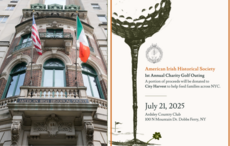Anthropologist Gwen Robbins of Appalachian State University has recently come forth with evidence that the cannibalism associated with the famous Donner Party tragedy never, in fact, took place. The university’s press release claimed, “The legend of the Donner party was primarily created by print journalists, who embellished the tales based on their own Victorian macabre sensibilities and their desire to sell more newspapers.”
In 1846, over 500 wagons full of American pioneers left their homes in the East to head west in search of fortune, most following a route from Independence, Missouri to the Continental Divide. The Donner Party was a group of eighty-seven members who chose to take the Hastings Cutoff after reaching Wyoming, which resulted in the party’s losing cattle and wagons, as well as significant delays. A month and a half behind schedule, the party became susceptible to snow- fall and ran out of food. Approximately half of the Donner Party did not survive the trip.
Ever since the 47 survivors arrived in California, stories abounded that they had come through the ordeal by eating the human flesh of members of their party.
In 2003, two archaeologists in the process of excavating the Donner family’s camp discovered a hearth containing thousands of small burned bone fragments. The next year, Gwen Robbins, a graduate student working on her PhD at the University of Oregon, was assigned the task of establishing evidence showing whether the bone fragments were human. In 2006, an analysis determined that none of them were.
Despite this, the connection of the Donner Party with cannibalism has persisted. Robbins continued her study of the remains found in the Donner family’s hearth as a professor at ASU, doing more intensive examinations of the bone fragments. A thorough microscopic investigation determined that, almost certainly, no human remains were eaten.
The team led by Robbins was able to identify food that did sustain the Donner family as coming from cattle, deer, horse and dog. Archaeologists also discovered broken crockery and slate pieces around the hearth, a suggestion that the members of the Donner Party attempted to remain civilized and hopeful even in the face of tragedy.
The 47 survivors of the Donner Party disaster – 11 men, 36 women and children – had long denied tales of cannibalism, and it is known that other travelers with the Donners did not resort to cannibalism. A piece written by Elgy Gillespie explores the family history of the Breens, one of the families who made it to California. Patrick Breen, his wife Margaret and children Edward, Simon, John, Patrick, James, Peter and Isabella made it safely to San Juan and opened a hotel there around the year that California joined the Union. Two years later Patrick, who had kept a diary during the ordeal, wrote the account that was published by the California Star on May 22, 1847, which makes clear no cannibalism took place on the part of the Breen family. Patrick Breen’s descendants attended the 150th-year reunion of Donner descendants near the Pass at Truckee in 1996, where they spoke about the need to correct the gruesome charges associated with the Donner story.
“They were very serious, very religious. They saved things up, they used to share, but they had to get their own large family to California. I’m very proud of them and the courage they showed,” said great-great-granddaughter Dorothy Avila. “Many accounts, like Jack King’s book, vindicate my great-great-grandfather and show how bravely he and his family behaved. The Breens came from Ireland, then came west. They joined the Donner Party in Missouri. My great-great-grandfather was John Breen, son of Patrick, and one of the survivors on the relief parties. He later became a supervisor in Monterey, and I remember my father saying that he never talked about the Donner Party and never liked hearing about it. The family experienced hardship that they just did not wish to remember. And so many false tales and nasty stories went around and multiplied.”
Gwen Robbins’ research will be published in the July issue of American Antiquity, and a book manuscript to be published in 2011 is underway. With the forensic evidence discovered in a hearth from 1847, the physical remnants of how families in desperation managed to survive, perhaps the horror-movie legends will be put to rest, and the story of families who, through courage and wit, came through an impossible journey and survived will remain.




Comments